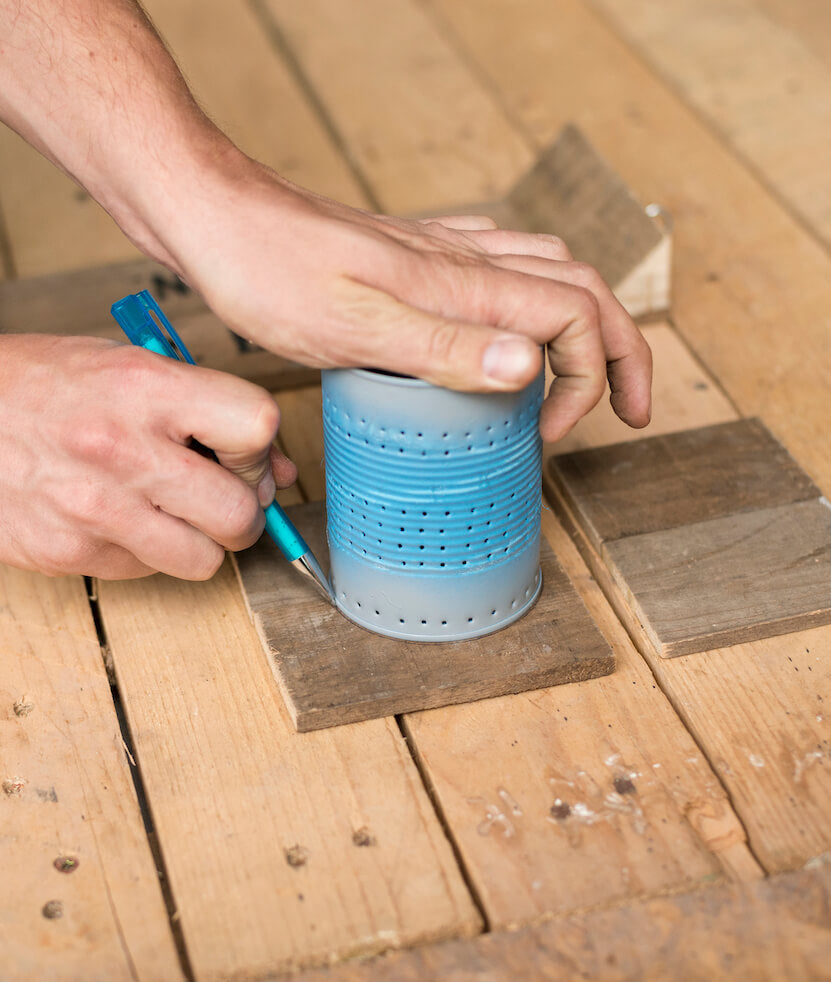DiY: Bird feeder

Your own patio is a great place to devote yourself to birdwatching. In summer, it's all chirping and twittering, and in winter, the birds frolic around the fat balls. Don't like them? Then get yourself an apple crate so we can finally get started! In just a few steps, you can turn your old apple crate into a lovely feeding station for the cute birds. Let's go!
Materials required:
- Apple box
- Glue (optional)
- About 20 small screws
- A screw hook
- wire
- Bottle
- Bird food
Tools required:
- jigsaw
- Tongs
- screwdriver

And this is how it works:
Step 1: Demolition: The box's slats are nailed and stapled to the corner posts on each side. Use the jigsaw to saw through these nails and staples between the slats and posts. This way, the boards remain intact! Using this method, you can remove all the side boards from the box. You then need to remove the remaining nails and staples with pliers.
Alternatively, you can try hammering the boards from the inside to force nails and staples out far enough so you can remove them with pliers. However, the staples are usually so tight that they're more likely to break the boards.
Step 2: Then the reconstruction: First, take two of the boards from the handle side. On most apple crates , these boards are slightly thicker than those on the long sides. Lay the boards next to each other; they will later form the back wall. Then take two of the squared timbers from the corners of the old crate and saw them to size so that they are as long as the back wall is wide. Then screw one of the two squared timbers onto the top of the back wall, flush with the upper edge. One side of the squared timber should be against the back wall, the other facing upwards. Now screw a hook into the center of this surface for hanging. Screw the second squared timber onto the bottom front of the back wall. One side of the squared timber should be flat against the back wall, the other facing upwards. The feeding trough will later be placed here.
Step 3: Build the feeding trough:

Step 4: Secure the bottle: Now drill four small holes in the back panel. Thread a wire through them and twist it behind the back panel. This will hold the bottle in place. When drilling the holes, make sure the bottom wire is level with the bottle neck, where the bottle gets thicker. Only then will the tightly tightened wire prevent the bottle from sliding down. The downward-facing opening of the bottle should not rest on the trough; instead, there should be about a finger's width of space to allow the food to slide down.

Is DIY your world?
For you, old no longer means useless, broken no longer means unusable, and junk no longer means general waste? Great, then we've achieved our goal. In the future, you'll look at the world with different eyes and see potential where others see bulky waste.
You can find more ideas for great DIY projects in our book "Your Creative Garden." Thanks to step-by-step instructions and helpful pictures, many of our DIY ideas can be recreated with children. The internet also has a lot to offer. So if you want to get active, the following websites are a good place to start:

We hope, of course, that you stay true to the DIY theme and wish you lots of fun and success with your next construction projects!


